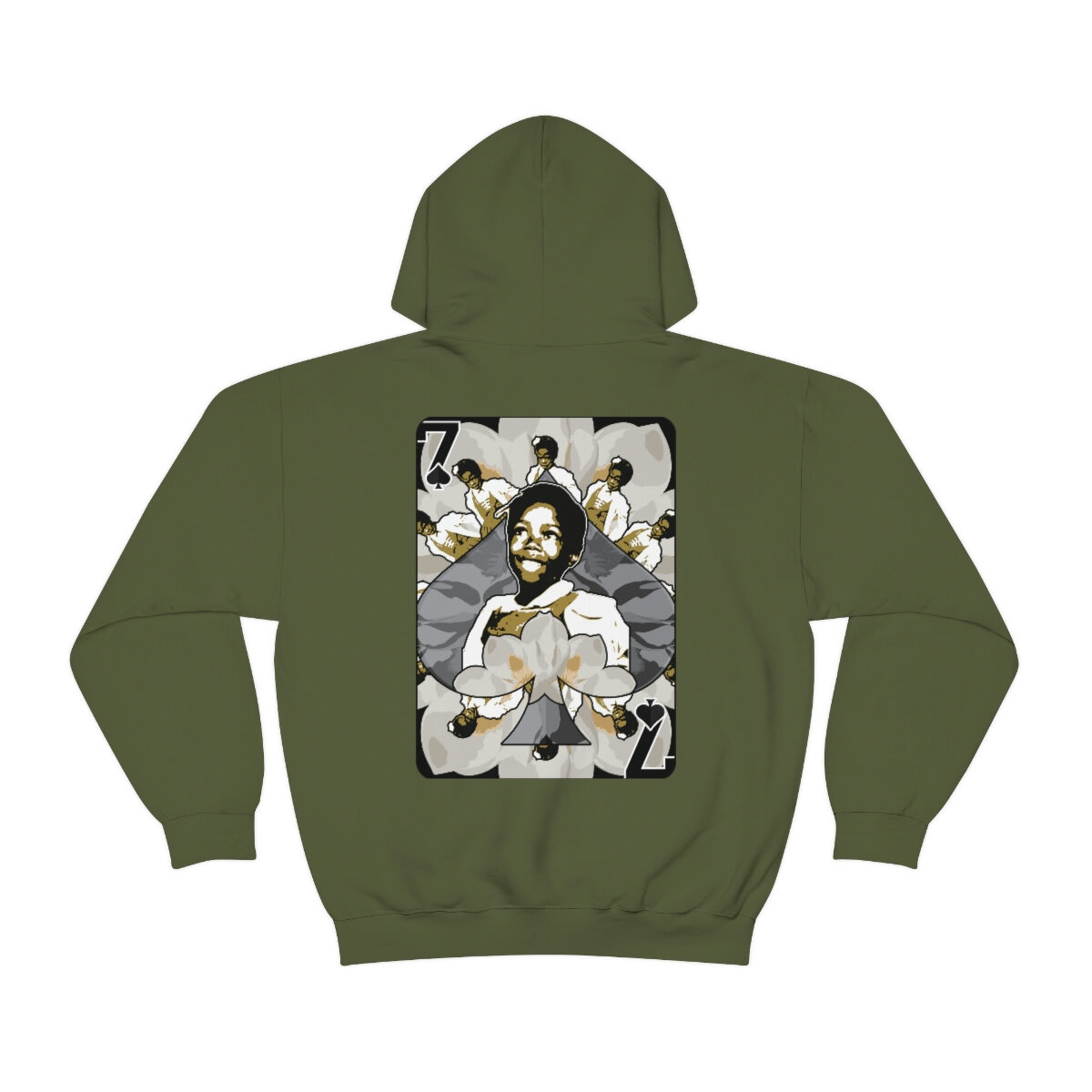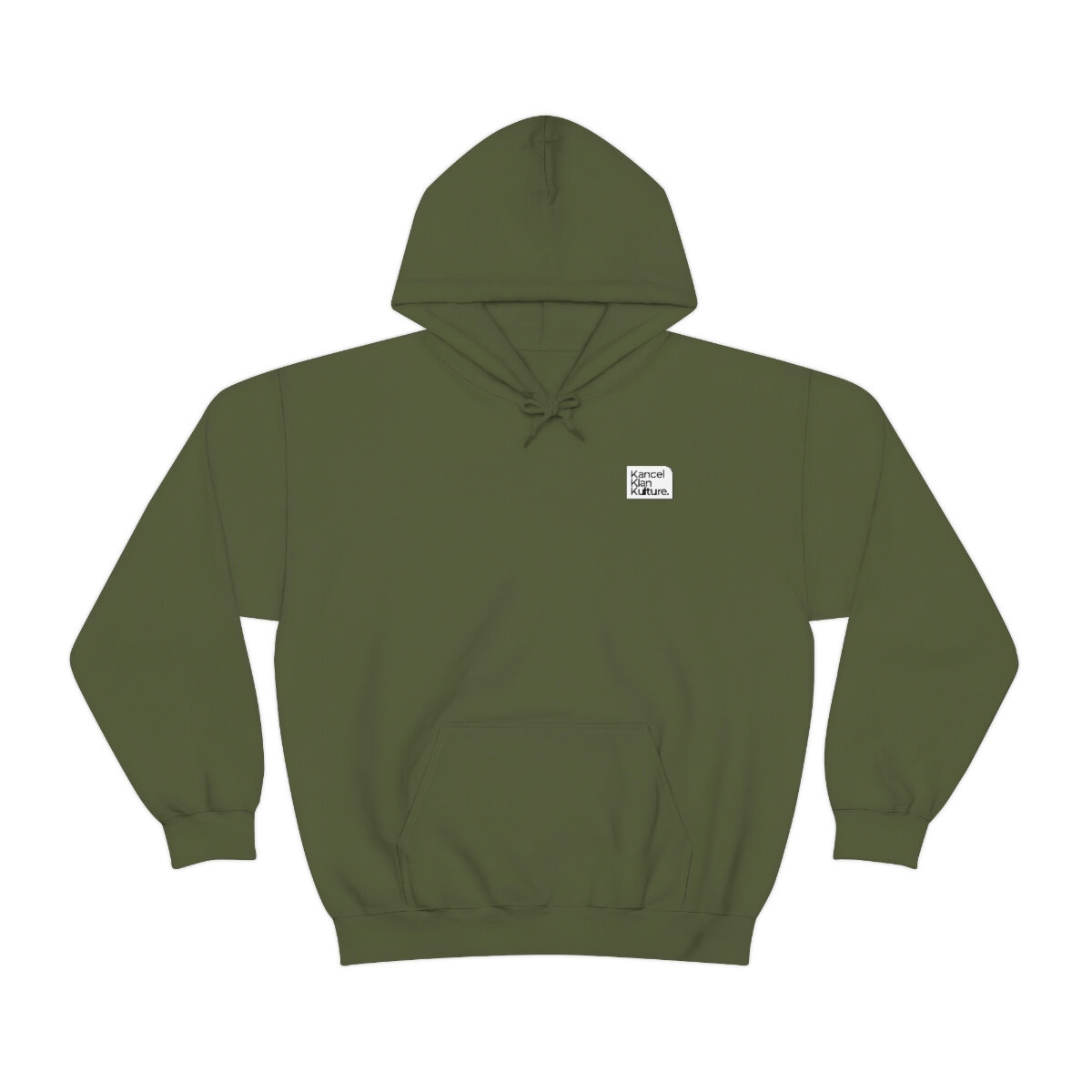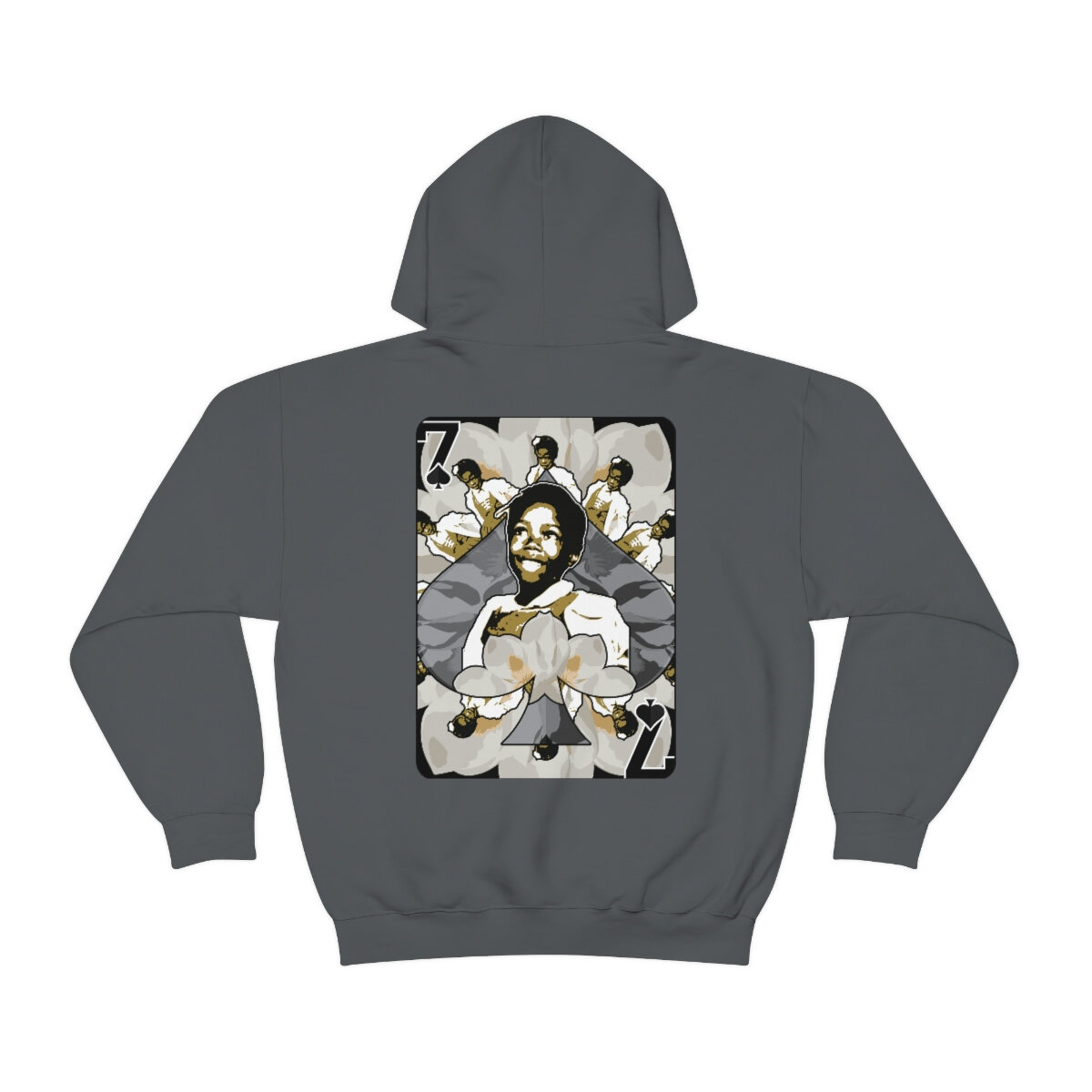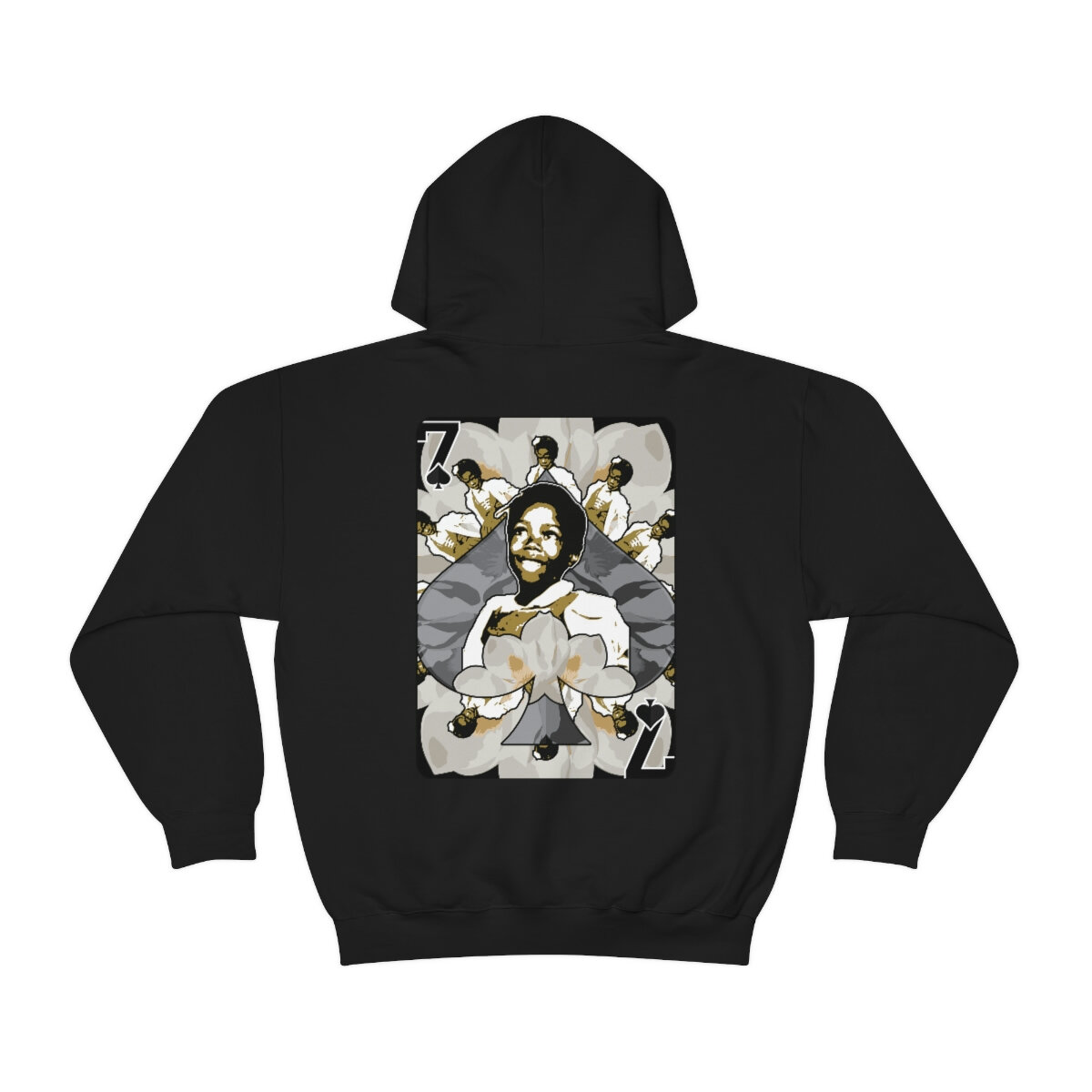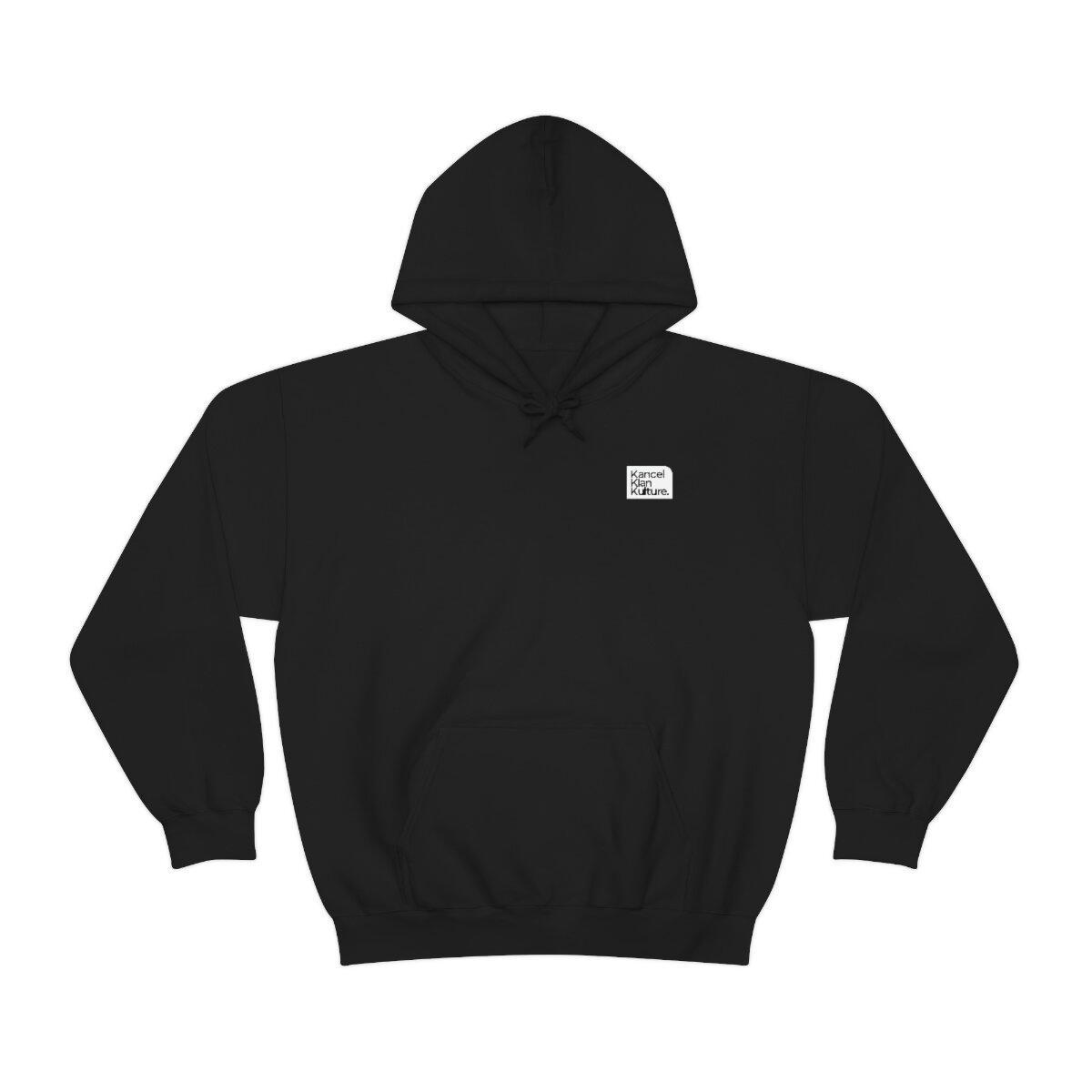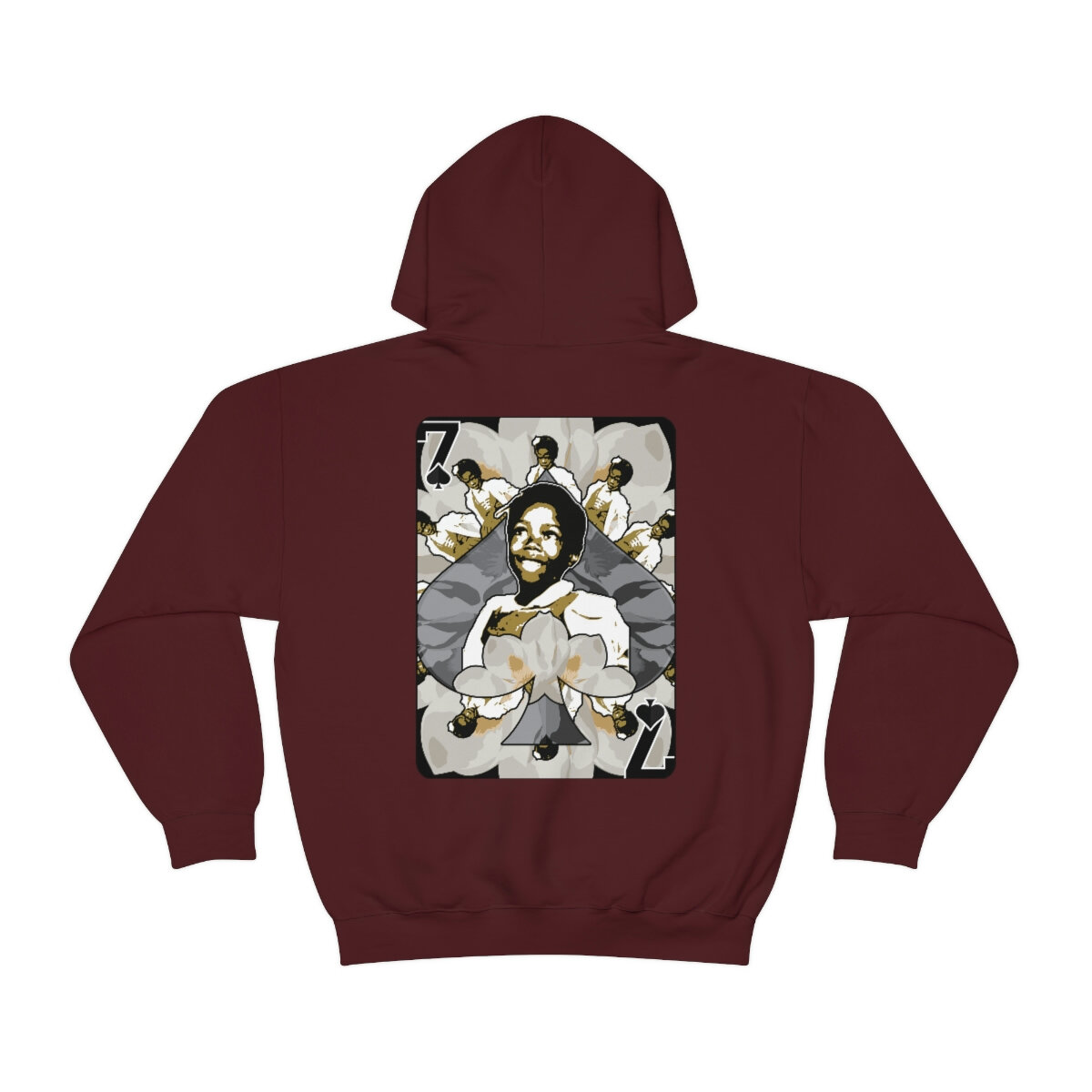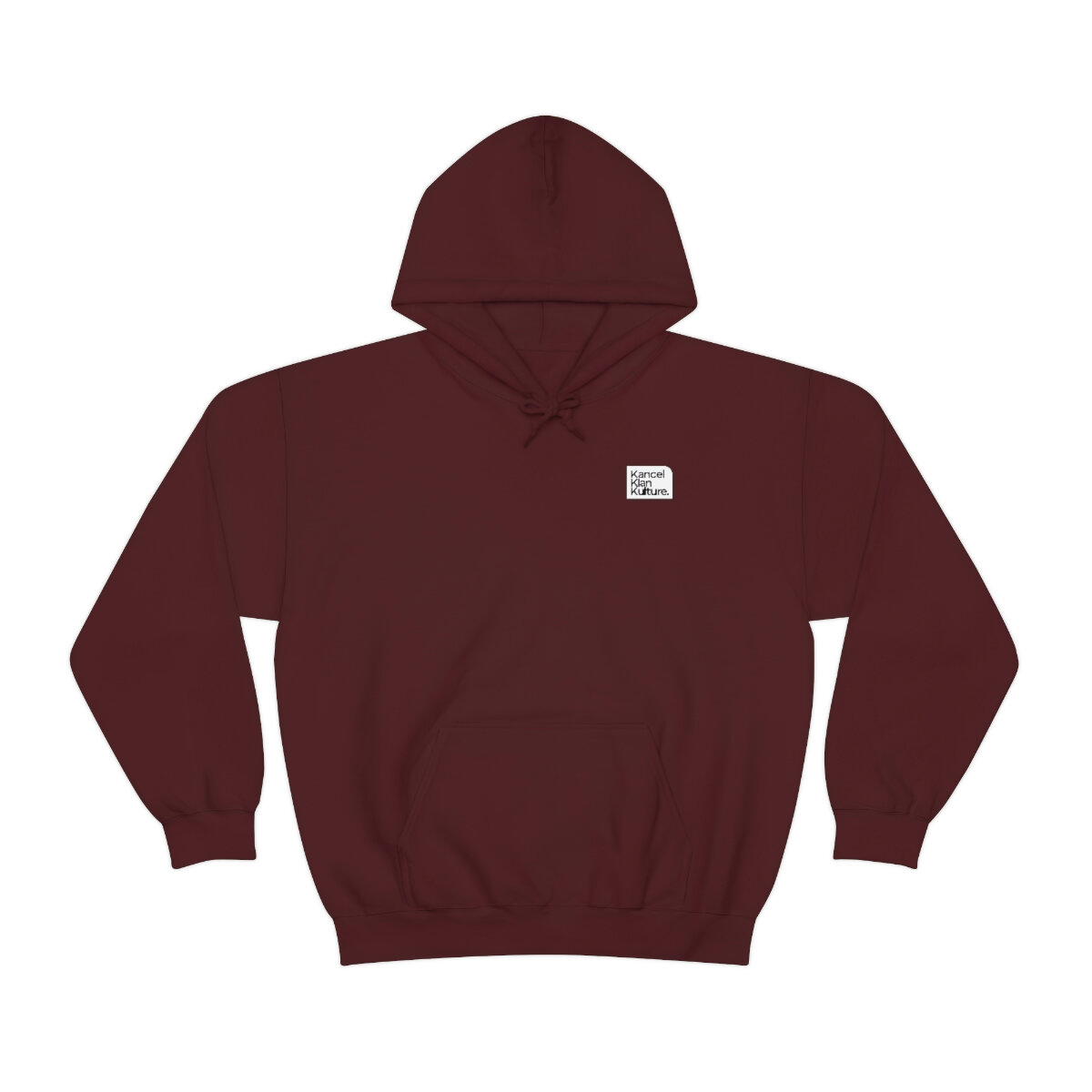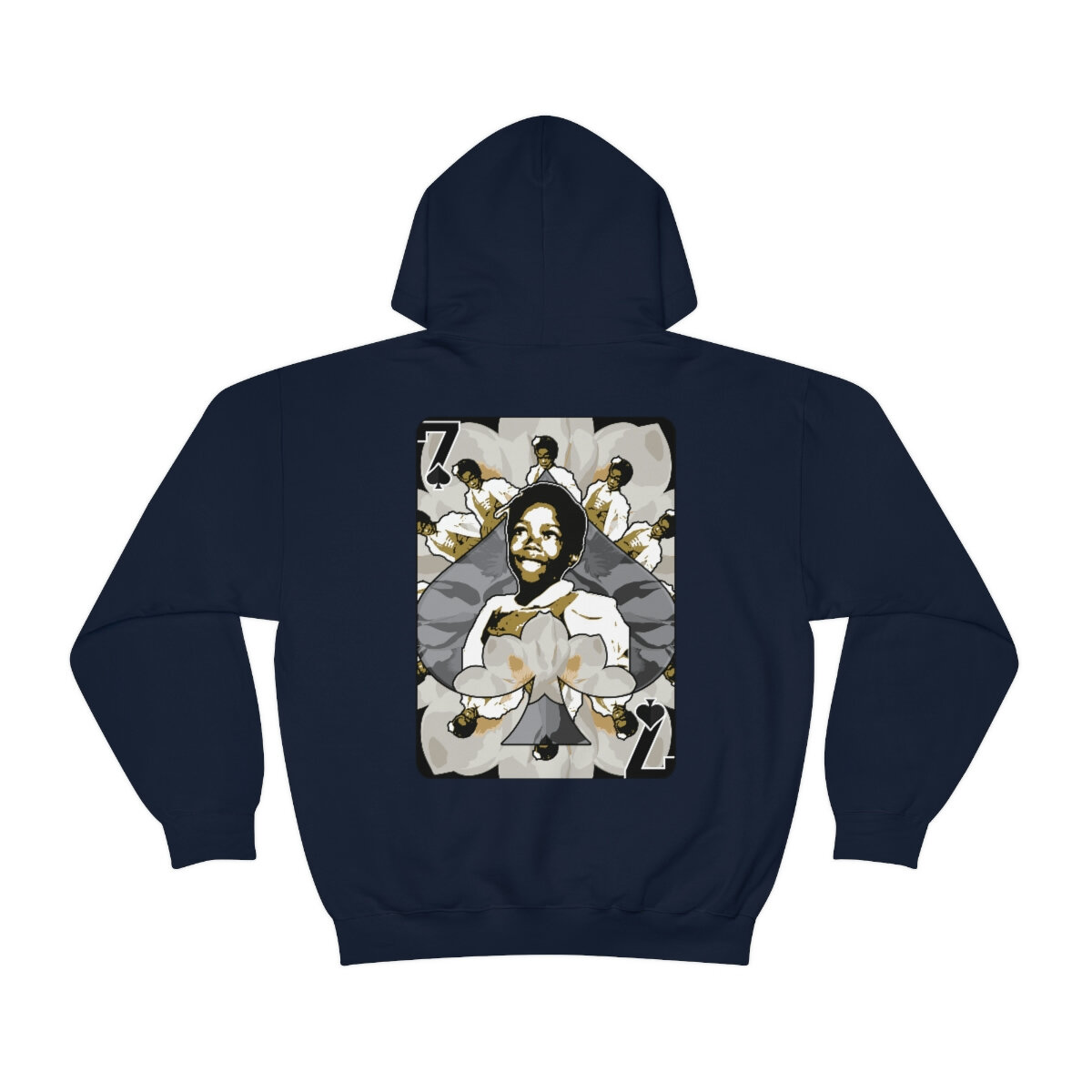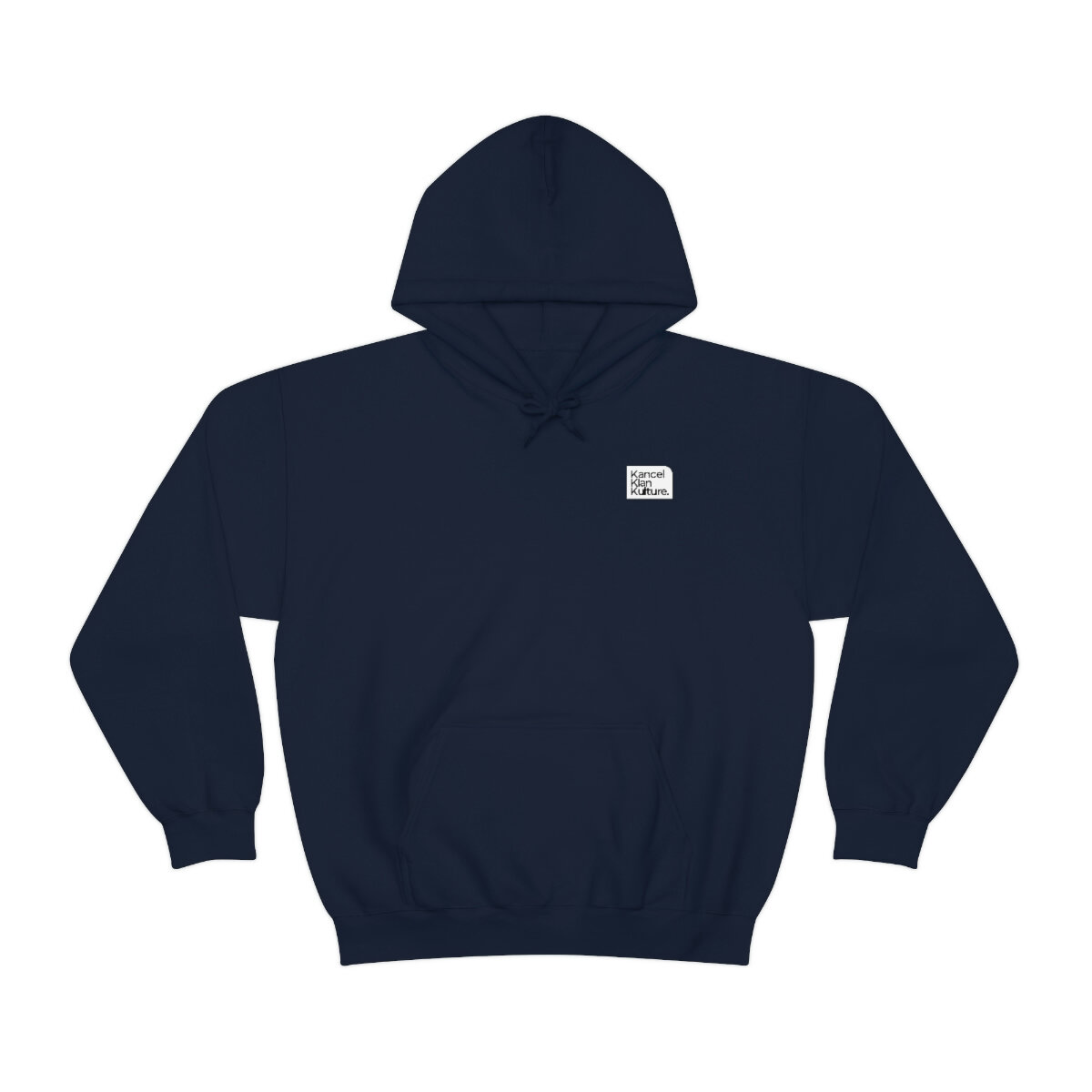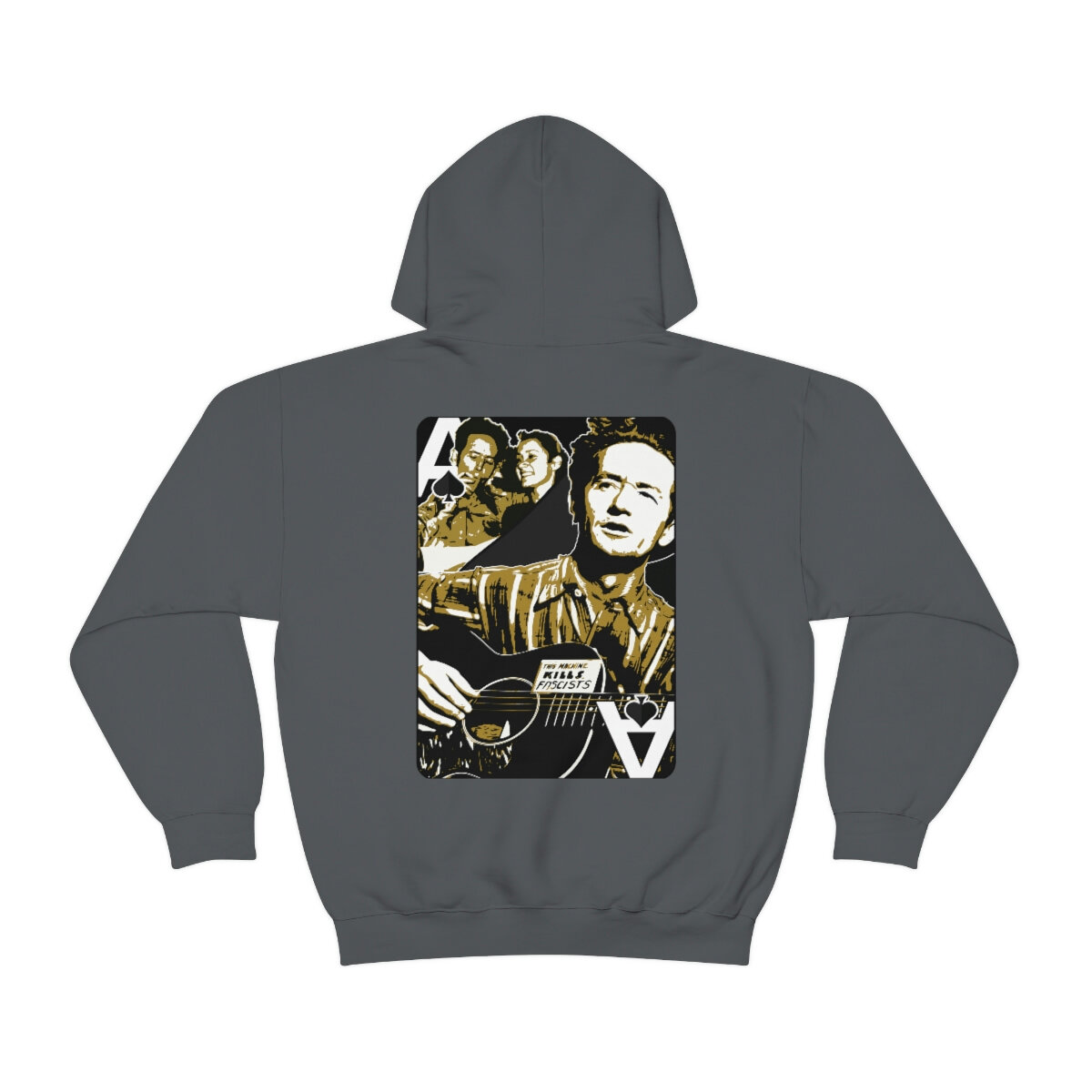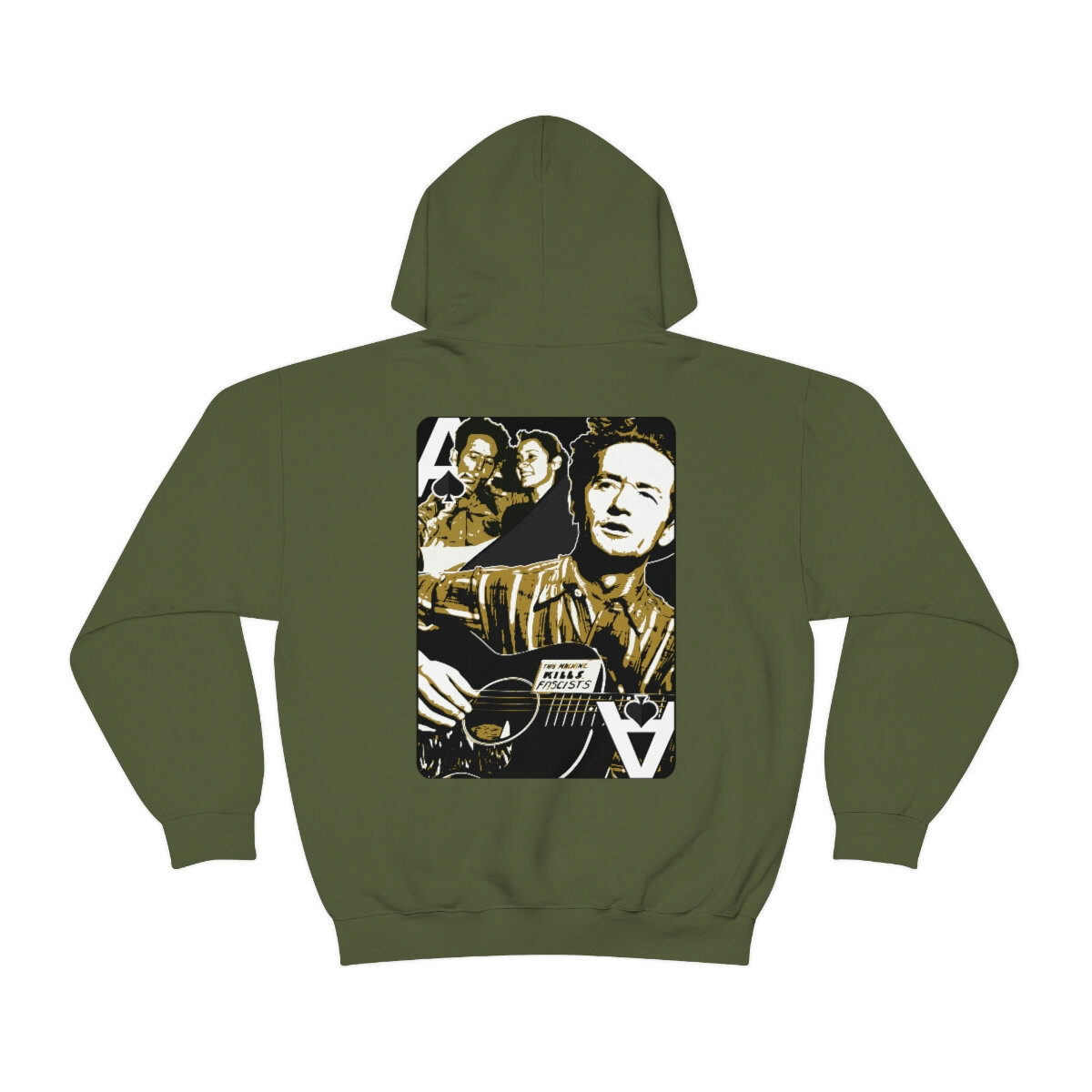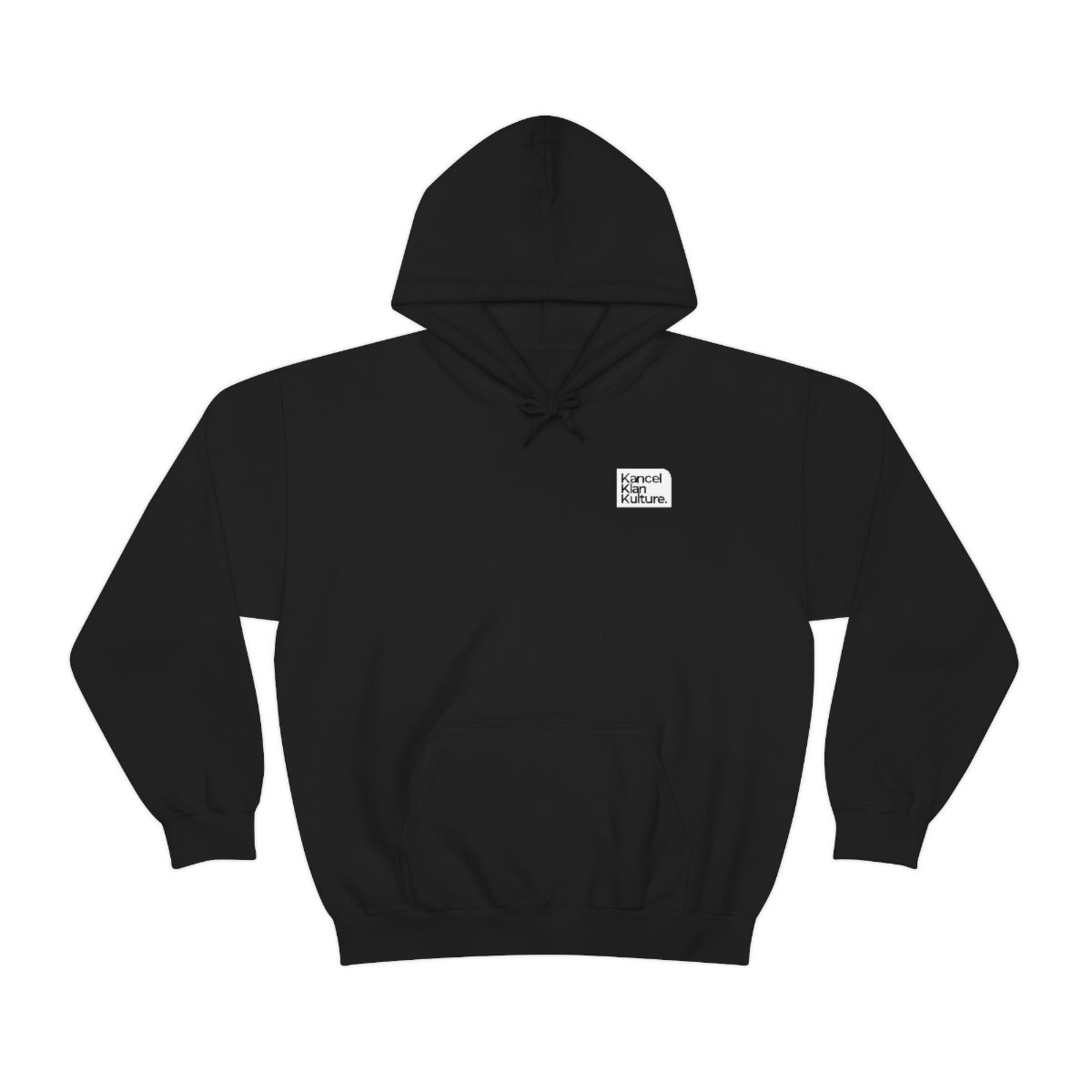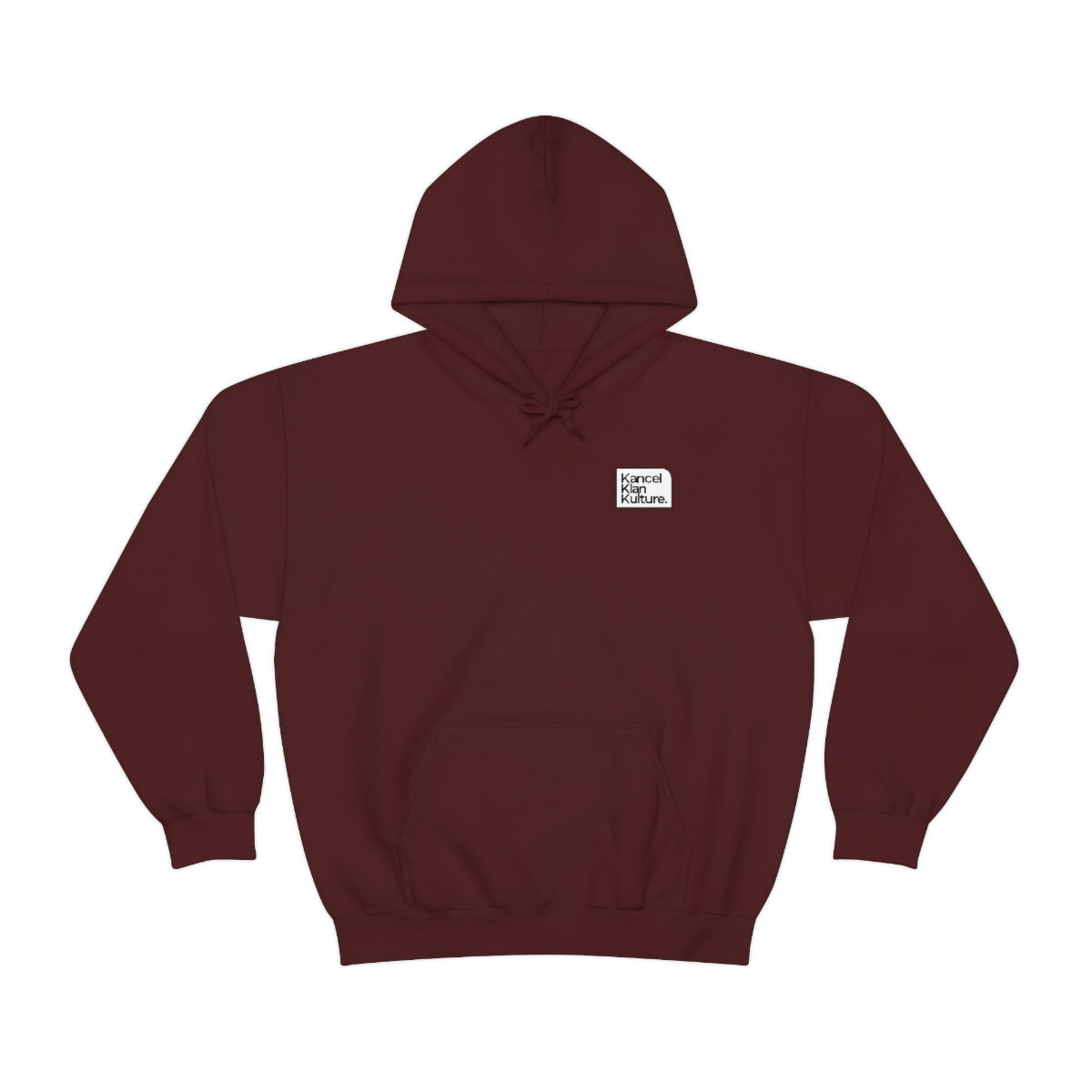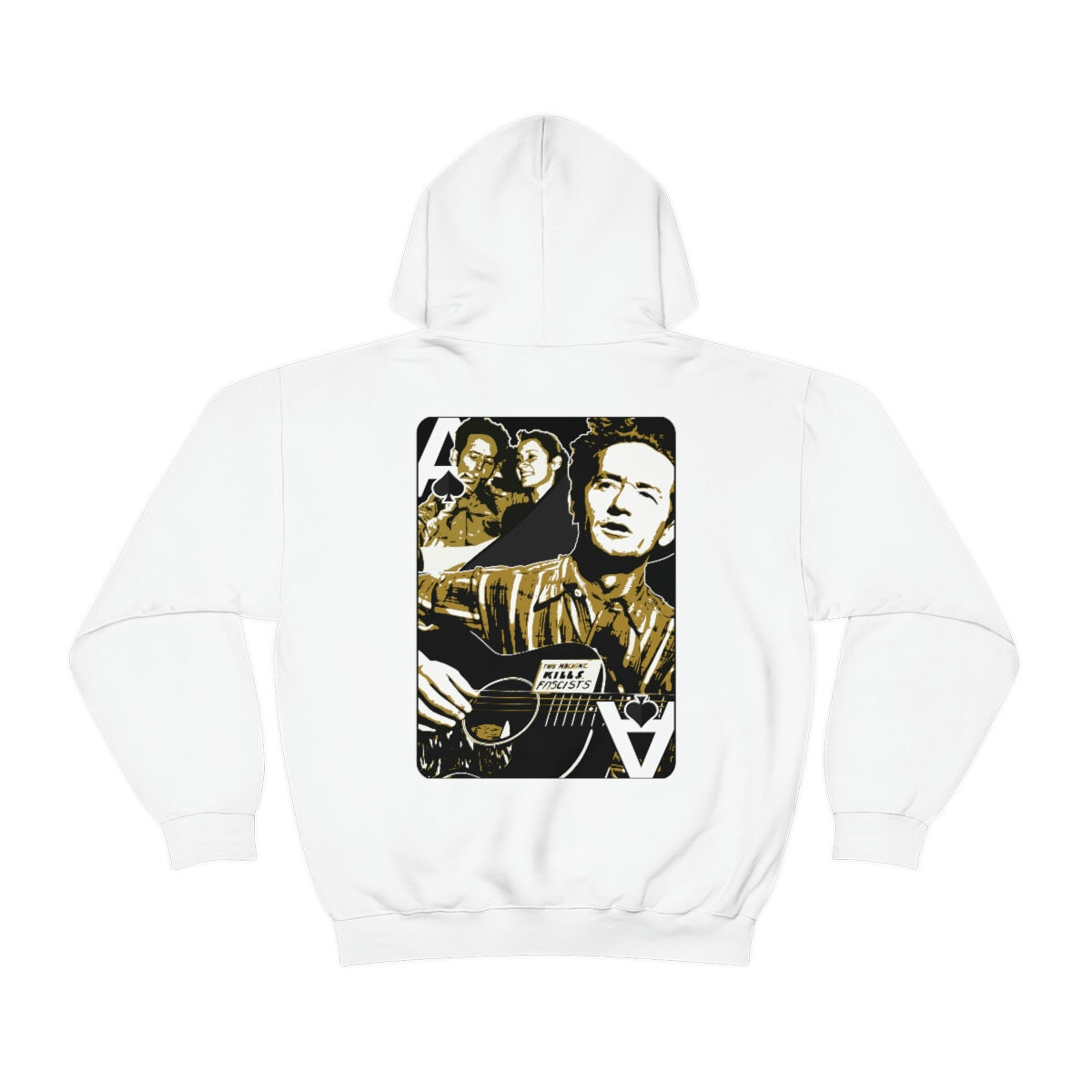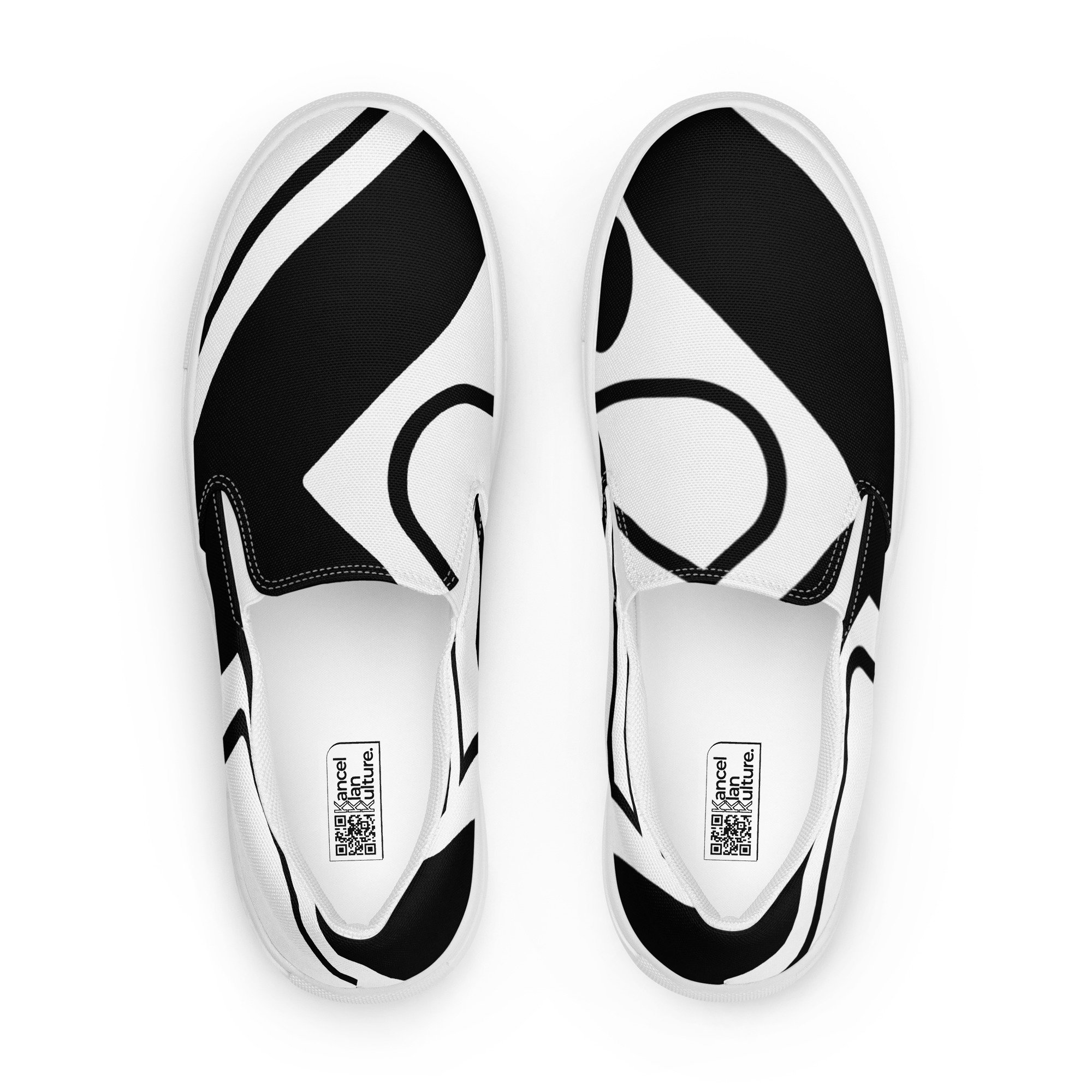Ruby's Choice Hooded Sweatshirt
Ruby Nell Bridges Hall (born September 8, 1954) is an American civil rights activist. She was the first African-American child to desegregate the all-white William Frantz Elementary School in Louisiana during the New Orleans school desegregation crisis on November 14, 1960.
Bridges attended a segregated kindergarten in 1959. In early 1960, Bridges was one of six black children in New Orleans to pass the test that determined whether they could go to the all-white William Frantz Elementary School. Two of the six decided to stay at their old school, Bridges went to Frantz by herself, and three children were transferred to McDonogh No. 19 and became known as the McDonogh Three. Bridges and her mother were escorted to school by four federal marshals during the first day that Bridges attended William Frantz Elementary. In the following days of that year, federal marshals continued to escort Bridges, though her mother stayed behind to take care of her younger siblings.
Bridges' father was initially reluctant, but her mother felt strongly that the move was needed not only to give her own daughter a better education, but to "take this step forward ... for all African-American children". Her mother finally convinced her father to let her go to the school.
Judge J. Skelly Wright's court order for the first day of integrated schools in New Orleans on Monday, November 14, 1960, was commemorated by Norman Rockwell in the painting, "The Problem We All Live With" (published in Look magazine on January 14, 1964). As Bridges describes it, "Driving up I could see the crowd, but living in New Orleans, I actually thought it was Mardi Gras. There was a large crowd of people outside of the school. They were throwing things and shouting, and that sort of goes on in New Orleans at Mardi Gras." Former United States Deputy Marshal Charles Burks later recalled, "She showed a lot of courage. She never cried. She didn't whimper. She just marched along like a little soldier, and we're all very very proud of her."
As soon as Bridges entered the school, white parents pulled their own children out; all the teachers except for one refused to teach while a black child was enrolled. Only one person agreed to teach Bridges and that was Barbara Henry, from Boston, Massachusetts, and for over a year Henry taught her alone, "as if she were teaching a whole class."
That first day, Bridges and her mother spent the entire day in the principal's office; the chaos of the school prevented their moving to the classroom until the second day. On the second day, however, a white student broke the boycott and entered the school when a 34-year-old Methodist minister, Lloyd Anderson Foreman, walked his five-year-old daughter Pam through the angry mob, saying, "I simply want the privilege of taking my child to school ..." A few days later, other white parents began bringing their children, and the protests began to subside. Yet, still, Bridges remained the only child in her class, as she would until the following year. Every morning, as Bridges walked to school, one woman would threaten to poison her, while another held up a black baby doll in a coffin; because of this, the U.S. Marshals dispatched by President Eisenhower, who were overseeing her safety, allowed Bridges to eat only the food that she brought from home.
Child psychiatrist Robert Coles volunteered to provide counseling to Bridges during her first year at Frantz. He met with her weekly in the Bridges home, later writing a children's book, The Story of Ruby Bridges, to acquaint other children with Bridges' story. Coles donated the royalties from the sale of that book to the Ruby Bridges Foundation, to provide money for school supplies or other educational needs for impoverished New Orleans school children.
The Bridges family suffered for their decision to send her to William Frantz Elementary: her father lost his job as a gas station attendant; the grocery store the family shopped at would no longer let them shop there; her grandparents, who were sharecroppers in Mississippi, were turned off their land; and Abon and Lucille Bridges separated. Bridges has noted that many others in the community, both black and white, showed support in a variety of ways. Some white families continued to send their children to Frantz despite the protests, a neighbor provided her father with a new job, and local people babysat, watched the house as protectors, and walked behind the federal marshals' car on the trips to school. It was not until Bridges was an adult that she learned that the immaculate clothing she wore to school in those first weeks at Frantz was sent to her family by a relative of Coles. Bridges says her family could never have afforded the dresses, socks, and shoes that are documented in photographs of her escort by U.S. Marshals to and from the school.
| S | M | L | XL | 2XL | 3XL | 4XL | 5XL | |
|---|---|---|---|---|---|---|---|---|
| Width, in | 20.08 | 22.05 | 24.02 | 25.98 | 27.99 | 29.92 | 31.89 | 33.86 |
| Length, in | 27.17 | 27.95 | 29.13 | 29.92 | 31.10 | 31.89 | 33.07 | 33.86 |
| Sleeve length from centre back, in | 33.50 | 34.50 | 35.50 | 36.50 | 37.01 | 38.50 | 39.50 | 40.50 |
This unisex heavy blend hooded sweatshirt is relaxation itself. Made with a thick blend of cotton and polyester, it feels plush, soft and warm, a perfect choice for any cold day. In the front, the spacious kangaroo pocket adds daily practicality while the hood's drawstring is the same color as the base sweater for extra style points.
.: 50% cotton, 50% polyester
.: Medium-heavy fabric (8.0 oz/yd² (271 g/m²))
.: Classic fit
.: Tear-away label
.: Runs true to size
Ruby Nell Bridges Hall (born September 8, 1954) is an American civil rights activist. She was the first African-American child to desegregate the all-white William Frantz Elementary School in Louisiana during the New Orleans school desegregation crisis on November 14, 1960.
Bridges attended a segregated kindergarten in 1959. In early 1960, Bridges was one of six black children in New Orleans to pass the test that determined whether they could go to the all-white William Frantz Elementary School. Two of the six decided to stay at their old school, Bridges went to Frantz by herself, and three children were transferred to McDonogh No. 19 and became known as the McDonogh Three. Bridges and her mother were escorted to school by four federal marshals during the first day that Bridges attended William Frantz Elementary. In the following days of that year, federal marshals continued to escort Bridges, though her mother stayed behind to take care of her younger siblings.
Bridges' father was initially reluctant, but her mother felt strongly that the move was needed not only to give her own daughter a better education, but to "take this step forward ... for all African-American children". Her mother finally convinced her father to let her go to the school.
Judge J. Skelly Wright's court order for the first day of integrated schools in New Orleans on Monday, November 14, 1960, was commemorated by Norman Rockwell in the painting, "The Problem We All Live With" (published in Look magazine on January 14, 1964). As Bridges describes it, "Driving up I could see the crowd, but living in New Orleans, I actually thought it was Mardi Gras. There was a large crowd of people outside of the school. They were throwing things and shouting, and that sort of goes on in New Orleans at Mardi Gras." Former United States Deputy Marshal Charles Burks later recalled, "She showed a lot of courage. She never cried. She didn't whimper. She just marched along like a little soldier, and we're all very very proud of her."
As soon as Bridges entered the school, white parents pulled their own children out; all the teachers except for one refused to teach while a black child was enrolled. Only one person agreed to teach Bridges and that was Barbara Henry, from Boston, Massachusetts, and for over a year Henry taught her alone, "as if she were teaching a whole class."
That first day, Bridges and her mother spent the entire day in the principal's office; the chaos of the school prevented their moving to the classroom until the second day. On the second day, however, a white student broke the boycott and entered the school when a 34-year-old Methodist minister, Lloyd Anderson Foreman, walked his five-year-old daughter Pam through the angry mob, saying, "I simply want the privilege of taking my child to school ..." A few days later, other white parents began bringing their children, and the protests began to subside. Yet, still, Bridges remained the only child in her class, as she would until the following year. Every morning, as Bridges walked to school, one woman would threaten to poison her, while another held up a black baby doll in a coffin; because of this, the U.S. Marshals dispatched by President Eisenhower, who were overseeing her safety, allowed Bridges to eat only the food that she brought from home.
Child psychiatrist Robert Coles volunteered to provide counseling to Bridges during her first year at Frantz. He met with her weekly in the Bridges home, later writing a children's book, The Story of Ruby Bridges, to acquaint other children with Bridges' story. Coles donated the royalties from the sale of that book to the Ruby Bridges Foundation, to provide money for school supplies or other educational needs for impoverished New Orleans school children.
The Bridges family suffered for their decision to send her to William Frantz Elementary: her father lost his job as a gas station attendant; the grocery store the family shopped at would no longer let them shop there; her grandparents, who were sharecroppers in Mississippi, were turned off their land; and Abon and Lucille Bridges separated. Bridges has noted that many others in the community, both black and white, showed support in a variety of ways. Some white families continued to send their children to Frantz despite the protests, a neighbor provided her father with a new job, and local people babysat, watched the house as protectors, and walked behind the federal marshals' car on the trips to school. It was not until Bridges was an adult that she learned that the immaculate clothing she wore to school in those first weeks at Frantz was sent to her family by a relative of Coles. Bridges says her family could never have afforded the dresses, socks, and shoes that are documented in photographs of her escort by U.S. Marshals to and from the school.
| S | M | L | XL | 2XL | 3XL | 4XL | 5XL | |
|---|---|---|---|---|---|---|---|---|
| Width, in | 20.08 | 22.05 | 24.02 | 25.98 | 27.99 | 29.92 | 31.89 | 33.86 |
| Length, in | 27.17 | 27.95 | 29.13 | 29.92 | 31.10 | 31.89 | 33.07 | 33.86 |
| Sleeve length from centre back, in | 33.50 | 34.50 | 35.50 | 36.50 | 37.01 | 38.50 | 39.50 | 40.50 |
This unisex heavy blend hooded sweatshirt is relaxation itself. Made with a thick blend of cotton and polyester, it feels plush, soft and warm, a perfect choice for any cold day. In the front, the spacious kangaroo pocket adds daily practicality while the hood's drawstring is the same color as the base sweater for extra style points.
.: 50% cotton, 50% polyester
.: Medium-heavy fabric (8.0 oz/yd² (271 g/m²))
.: Classic fit
.: Tear-away label
.: Runs true to size
Ruby Nell Bridges Hall (born September 8, 1954) is an American civil rights activist. She was the first African-American child to desegregate the all-white William Frantz Elementary School in Louisiana during the New Orleans school desegregation crisis on November 14, 1960.
Bridges attended a segregated kindergarten in 1959. In early 1960, Bridges was one of six black children in New Orleans to pass the test that determined whether they could go to the all-white William Frantz Elementary School. Two of the six decided to stay at their old school, Bridges went to Frantz by herself, and three children were transferred to McDonogh No. 19 and became known as the McDonogh Three. Bridges and her mother were escorted to school by four federal marshals during the first day that Bridges attended William Frantz Elementary. In the following days of that year, federal marshals continued to escort Bridges, though her mother stayed behind to take care of her younger siblings.
Bridges' father was initially reluctant, but her mother felt strongly that the move was needed not only to give her own daughter a better education, but to "take this step forward ... for all African-American children". Her mother finally convinced her father to let her go to the school.
Judge J. Skelly Wright's court order for the first day of integrated schools in New Orleans on Monday, November 14, 1960, was commemorated by Norman Rockwell in the painting, "The Problem We All Live With" (published in Look magazine on January 14, 1964). As Bridges describes it, "Driving up I could see the crowd, but living in New Orleans, I actually thought it was Mardi Gras. There was a large crowd of people outside of the school. They were throwing things and shouting, and that sort of goes on in New Orleans at Mardi Gras." Former United States Deputy Marshal Charles Burks later recalled, "She showed a lot of courage. She never cried. She didn't whimper. She just marched along like a little soldier, and we're all very very proud of her."
As soon as Bridges entered the school, white parents pulled their own children out; all the teachers except for one refused to teach while a black child was enrolled. Only one person agreed to teach Bridges and that was Barbara Henry, from Boston, Massachusetts, and for over a year Henry taught her alone, "as if she were teaching a whole class."
That first day, Bridges and her mother spent the entire day in the principal's office; the chaos of the school prevented their moving to the classroom until the second day. On the second day, however, a white student broke the boycott and entered the school when a 34-year-old Methodist minister, Lloyd Anderson Foreman, walked his five-year-old daughter Pam through the angry mob, saying, "I simply want the privilege of taking my child to school ..." A few days later, other white parents began bringing their children, and the protests began to subside. Yet, still, Bridges remained the only child in her class, as she would until the following year. Every morning, as Bridges walked to school, one woman would threaten to poison her, while another held up a black baby doll in a coffin; because of this, the U.S. Marshals dispatched by President Eisenhower, who were overseeing her safety, allowed Bridges to eat only the food that she brought from home.
Child psychiatrist Robert Coles volunteered to provide counseling to Bridges during her first year at Frantz. He met with her weekly in the Bridges home, later writing a children's book, The Story of Ruby Bridges, to acquaint other children with Bridges' story. Coles donated the royalties from the sale of that book to the Ruby Bridges Foundation, to provide money for school supplies or other educational needs for impoverished New Orleans school children.
The Bridges family suffered for their decision to send her to William Frantz Elementary: her father lost his job as a gas station attendant; the grocery store the family shopped at would no longer let them shop there; her grandparents, who were sharecroppers in Mississippi, were turned off their land; and Abon and Lucille Bridges separated. Bridges has noted that many others in the community, both black and white, showed support in a variety of ways. Some white families continued to send their children to Frantz despite the protests, a neighbor provided her father with a new job, and local people babysat, watched the house as protectors, and walked behind the federal marshals' car on the trips to school. It was not until Bridges was an adult that she learned that the immaculate clothing she wore to school in those first weeks at Frantz was sent to her family by a relative of Coles. Bridges says her family could never have afforded the dresses, socks, and shoes that are documented in photographs of her escort by U.S. Marshals to and from the school.
| S | M | L | XL | 2XL | 3XL | 4XL | 5XL | |
|---|---|---|---|---|---|---|---|---|
| Width, in | 20.08 | 22.05 | 24.02 | 25.98 | 27.99 | 29.92 | 31.89 | 33.86 |
| Length, in | 27.17 | 27.95 | 29.13 | 29.92 | 31.10 | 31.89 | 33.07 | 33.86 |
| Sleeve length from centre back, in | 33.50 | 34.50 | 35.50 | 36.50 | 37.01 | 38.50 | 39.50 | 40.50 |
This unisex heavy blend hooded sweatshirt is relaxation itself. Made with a thick blend of cotton and polyester, it feels plush, soft and warm, a perfect choice for any cold day. In the front, the spacious kangaroo pocket adds daily practicality while the hood's drawstring is the same color as the base sweater for extra style points.
.: 50% cotton, 50% polyester
.: Medium-heavy fabric (8.0 oz/yd² (271 g/m²))
.: Classic fit
.: Tear-away label
.: Runs true to size

